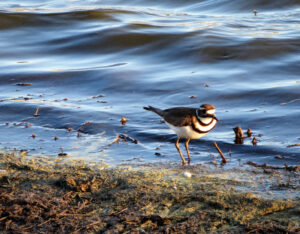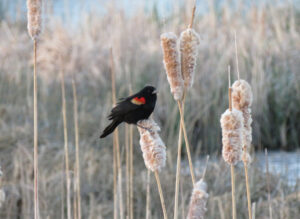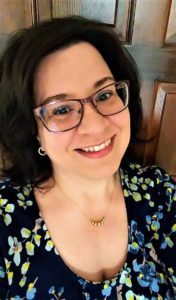“Thank you for creating such a positive and beautiful atmosphere. You looked at us as if we haven’t been broken just yet.”
Note from a student
I have been fortunate to find another teaching position at our local university and, although I don’t often write about my students, they have been much on my mind since I sent them off to their final exams and summer vacations on April 29. Looking at the calendar today made me realize that I’ve traveled to Kachina Wetlands four times since their departure, seeking solace in nature. As many teachers will tell you, summer is a welcome respite from the frantic day-to-day work of acquiring new knowledge and putting into practice ideas and concepts learned previously. That’s not the case for me this year. I haven’t been able to shake the feeling of melancholy—I miss my students. So, I keep returning to the wetlands, looking for connections between nature and humans in ways that maybe I hadn’t before.
Teaching was what I learned to do in my mid-forties, when I was completing my master’s degree in creative writing. Teaching and bird watching have become my two passions. When I first started going to Kachina Wetlands, I had in mind that I would become some kind of intense birder, documenting all of my observations. Instead, the bird books were too heavy to carry (or I simply forgot them) and I found myself staring at birds, observing them beyond notations. My favorite pastime at the wetlands is watching red-winged blackbirds clutching cattail stalks while they sing. It’s a small feat of physics watching these bulbous little birds with delicate talons grip reeds, barely bending them. When the birds prepare to sing, they rotate their wings so that the red markings show like epaulets.
This past weekend I watched as the blackbirds took over the main reservoir pond, singing their songs into the sunset. So many stalks held the blackbirds, each taking turns to sing. It reminded me of my students scattered throughout classrooms, each struggling in different ways this semester. We found ourselves together, gripping pens and styluses and white board markers, trying to write our thoughts, speaking in class hoping to be heard, and trying to make sense of the world around us. Like the blackbirds, we were often singing different songs at different intervals, but at least we were together, making some kind of delightful noise.
 When I wasn’t staring at the blackbirds at Kachina this past weekend, I spotted a killdeer and followed it around the pond at a distance. The killdeer had a sad and beautiful cry that cut through the other bird songs. It was alone at the edge of the pond, eating something in the newly grown rushes, stopping to sing every so often, perhaps signaling to another killdeer friend or warning me to stay the hell away. After the sun set and a thousand mosquitoes landed on me, I drove home thinking about the killdeer, which I had only seen once before at the wetlands. Later that night, I read that killdeer will feign a broken wing, not to capture prey, as I originally thought, but to lure predators away from their nests.
When I wasn’t staring at the blackbirds at Kachina this past weekend, I spotted a killdeer and followed it around the pond at a distance. The killdeer had a sad and beautiful cry that cut through the other bird songs. It was alone at the edge of the pond, eating something in the newly grown rushes, stopping to sing every so often, perhaps signaling to another killdeer friend or warning me to stay the hell away. After the sun set and a thousand mosquitoes landed on me, I drove home thinking about the killdeer, which I had only seen once before at the wetlands. Later that night, I read that killdeer will feign a broken wing, not to capture prey, as I originally thought, but to lure predators away from their nests.
Although the blackbirds reminded me of the classroom, the killdeer was more akin to the feeling I had about the entire school year—closing the second year of teaching during a pandemic. It’s not that I was feigning a broken wing in hopes of taking pressure off my students or luring administrators away from them. But there is something to be said for showing up every day wishing I had a sling for my broken heart. Everywhere in the media, writers and talking heads try to tell me about “kids these days,” and how they are slacking off everywhere. I don’t know who they are referring to. Many students I worked with this past semester are working full time or two part-time jobs to put themselves through school. They are also juggling the demands of their families back home while trying to keep up with schoolwork. Some have even had their own hearts broken by a partner or a sibling or a friend, but they kept coming to school despite several waves of pandemic outbreaks. Every day, they showed up, hoping that for 75-minutes we could make some sense of the world around us.
There are a lot of articles about teaching during a pandemic (still), and excellent pedagogical practices to follow. While many of these ideas inspire me, they don’t address completely what I’ve seen in the classroom this year—students who continue to struggle with the routines of faux-normalcy. Toward the end of the semester, I asked students to tell me what success looked like for them. After several moments of silence, one student said, “I got out of bed and came to class today. That felt successful.” Over 20 students nodded their heads in agreement. I don’t know how much learning can happen when we, as a nation, collectively refuse to acknowledge the deep trauma students continue to suffer through this pandemic.
As an individual, I did my best for my students. I brought in snacks and tissues, emailed and texted to check in when they missed class, opened discussions on non-class topics, played music, sang, danced, and helped them look for and document moments of beauty in their daily lives. I thought I would collapse on my sofa after grading but that hasn’t really happened. I’m missing my students keenly this summer and I want to reach out to them, check in, and send some memes and new Spotify playlists. I feel myself grasping onto the communities we created rather than letting the students find their own ways out of the proverbial nest of the classroom. For now, I’m keeping some distance to give my heart time to heal itself rather than pretend I haven’t been affected by the lives they have been living these past two years. I have some new songs to learn this summer, and I know the students do as well.


